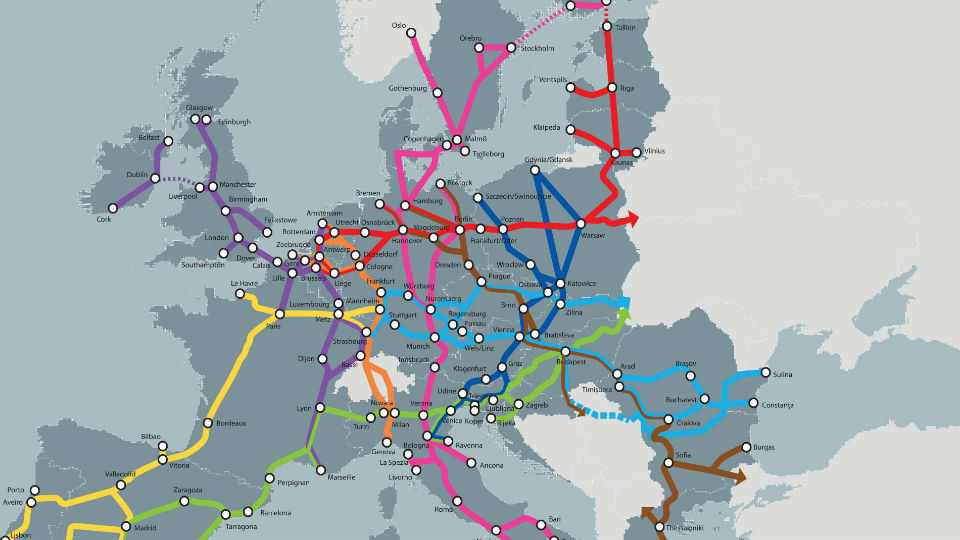Freight capacity on TEN-T network not enough

Capacity allocation for freight on the European rail corridors is currently not meeting the needs of international rail freight. The way that this is handled in Europe is fragmented and unharmonized. Therefore, the Rail Freight Corridors Regulation should be revised. This is the statement of ERFA, representing the European rail freight industry, in the public consultation on the corridor network.
The European Commission has already started the revision process of the Trans-European Transport Network (TEN-T), a Europe-wide network including the core transport routes. It is currently rounding up an open consultation, which eventually results in a regulation proposal for the revised TEN-T, to be presented during 2021-2022.
International approach
ERFA strongly believes that for rail freight to able to grow, the sector needs a strong Rail Freight Corridors Regulation that ensures that rail freight companies have access to a sufficient level and quality of capacity along corridors.
“Infrastructure allocation is currently managed at national level. This is understandable given that most rail traffic, especially passenger, is national. Freight, however, is usually international and an international approach to capacity allocation is therefore required. The revision of Regulation 2010/913 has a crucial role to play in bridging the national approach of capacity allocation and the international needs of freight transportation”, the organisation writes.
Equal priority
According to the interest group, allocation rules for freight paths have to be defined, internationally harmonised and secured for freight trains. Freight trains must have equal priority in slot allocation as passenger trains in all countries of the corridors.
Moreover, infrastructure managers and corridor organisations should implement supra-national traffic management, which would have a specific focus on the quality of international freight trains, they recommend, they state.
“Give the corridor organisations equal decision and steering rights as the national infrastructure managers. Corridor investments should not be hindered by national interest. Railway undertakings should have an equal position in the governance of corridor organisation with defined decision rights.”
TEN-T network
ERFA Secretary General, Conor Feighan concluded: “ERFA has contributed to the public consultation and looks forward to engaging with the European Commission and other stakeholders in the next steps of the process. ERFA strongly believes that the needs of the rail freight industry must be central to the revision process and that it is crucial for Europe’s modal shift objectives that this opportunity is not lost.”
The Regulation concerning a European Rail Network for Competitive Freight (Regulation EU 913/2010 ) entered into force on 9 November 2010. It is the ambition of the European Commission to considerably improve interoperability in Europe. The final objective is to ship 30 per cent of all terrestrial goods over distances greater than 300 kilometres by rail or barge by 2030.
Also read:





